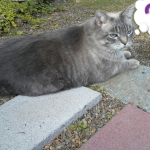Today’s subject was inspired by a new writer, Darlene E. She asked for the correct format for writing dialogue, interior thoughts and what I call “self-talk.” Great question, one that comes up a lot.
Here’s the scoop:
- Spoken words and the puncuation go inside quotation marks. A speaker quoting another person’s words would place single quotes around them and double quotes around their own words. EX: Jane picked up a mango in the produce section of the supermarket. “These are probably from South America,” she said to no one in particular. “Mom told me, ‘Jane, don’t ever buy fruit from another country,’ and that’s good enough for me.”
- The viewpoint character’s thoughts are simply recorded as simple statements, no need for “she thought.” EX: Jane picked up a mango in the supermarket’s produce section. Exotic stuff like mangoes had to be from South America. Her mother had warned her about that.
- The viewpoint character’s self-talk (that is, words heard in one’s head but not spoken aloud) is written in first/second person and placed in italics. EX: Jane picked up a mango from the produce display and frowned. You have to be kidding me. I’ll never buy fruit from South America.
Writing Tip for Today: Practice writing dialogue, interior thoughts and self-talk. Remember that for dialogue, each time a new speaker talks, a new paragraph is needed. This prevents readers from getting confused as to who is speaking.





Hi Linda,
I am a little confused about the difference between a character’s thoughts and her self-talk. When would you use on over the other.
An unrelated topic: have you considered teaching a blog class? My oldest daughter and I both want to learn.
My youngest daughter had an interview at the embassy in India and they have OK’d a visa for her husband. Looks like they will come home.
Have a great spring day.
Diane Lemery McDonald